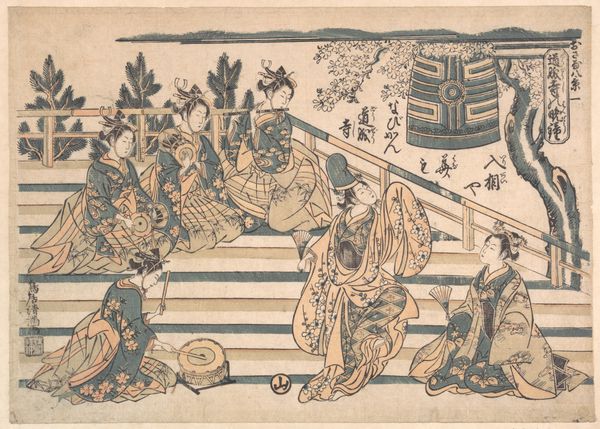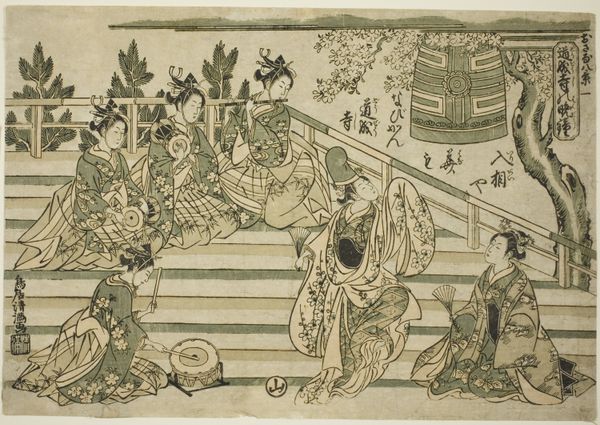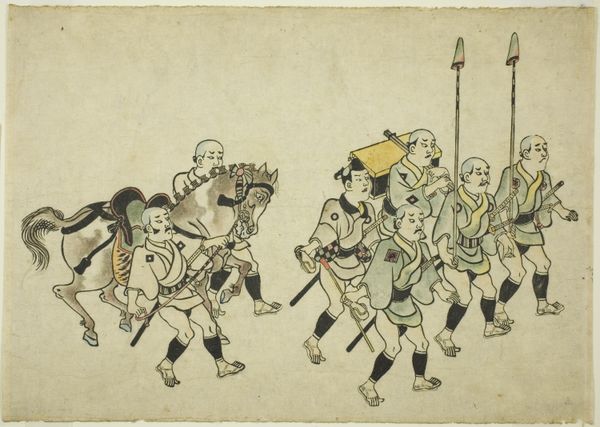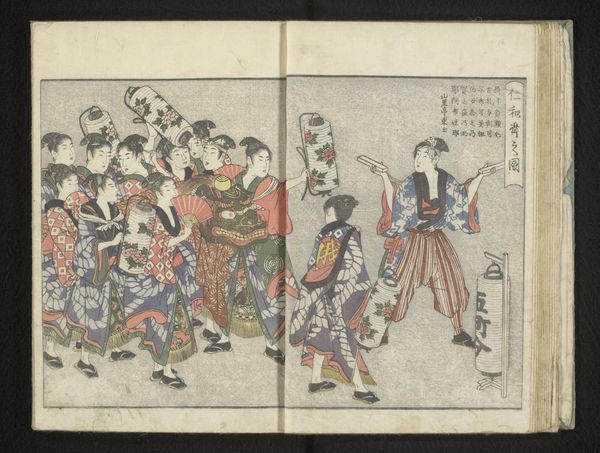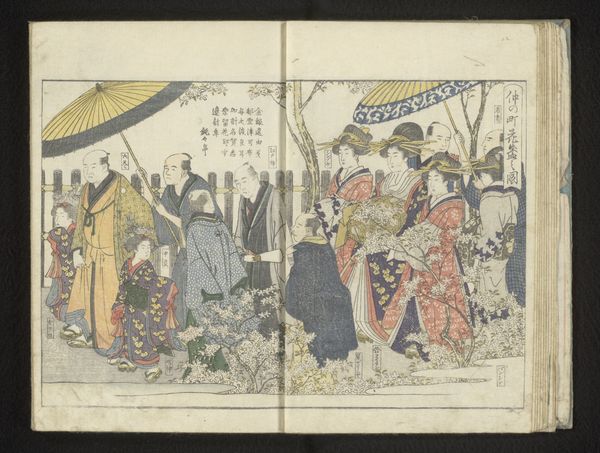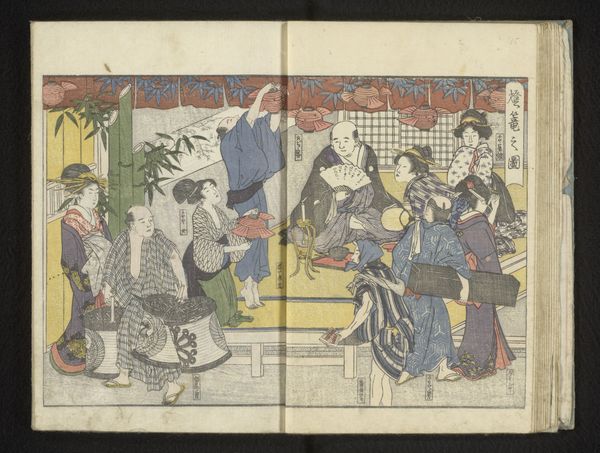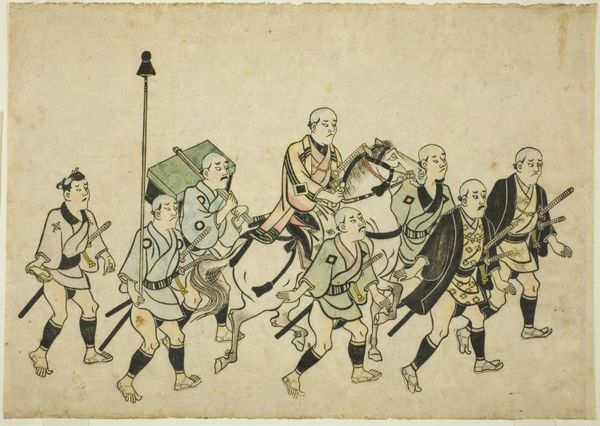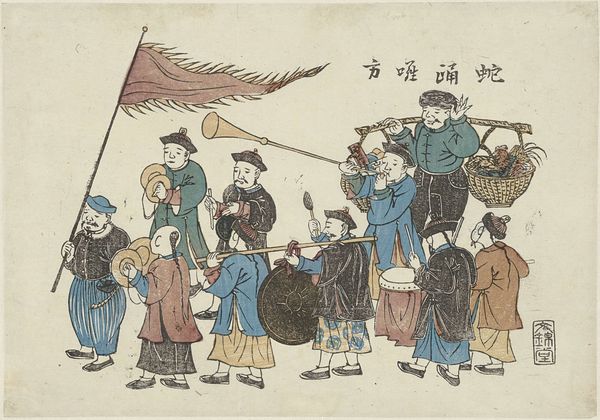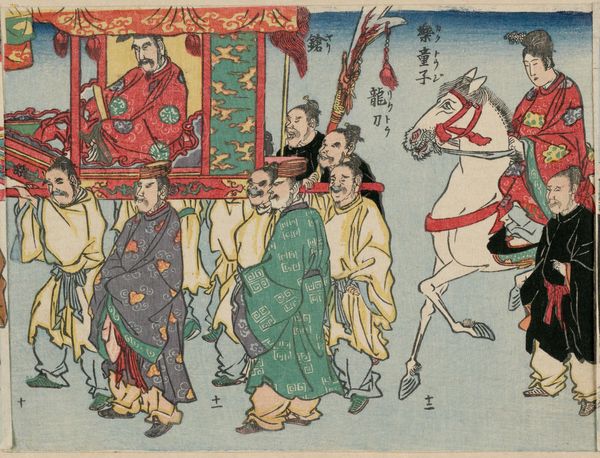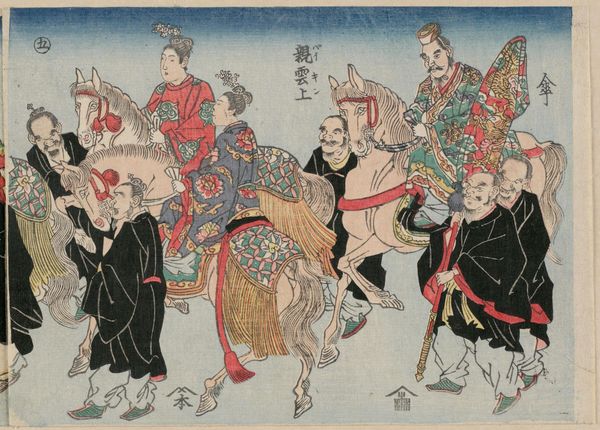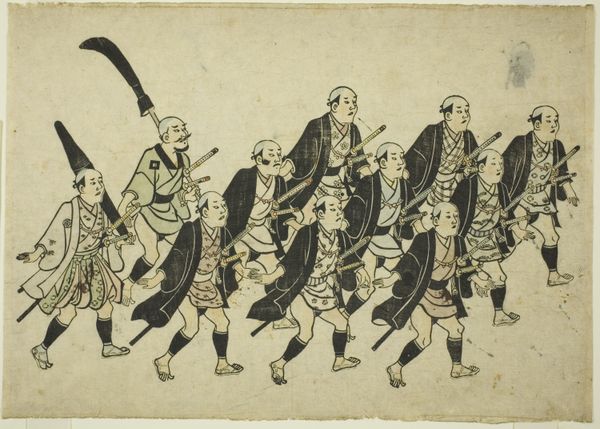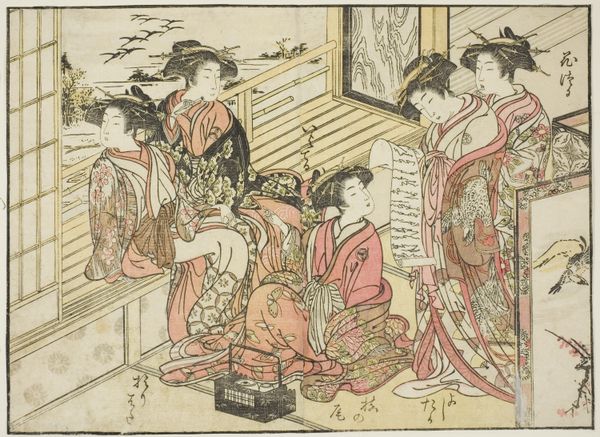
The Korean Ambassador on His Way to the Capital 1700 - 1756
0:00
0:00
print, woodblock-print
#
narrative-art
# print
#
asian-art
#
landscape
#
ukiyo-e
#
woodblock-print
#
genre-painting
Dimensions: H. 5 3/4 in. (14.6 cm); W. 12 11/16 in. (32.2 cm)
Copyright: Public Domain
Editor: So, this is Nishimura Shigenaga’s "The Korean Ambassador on His Way to the Capital," made sometime between 1700 and 1756. It’s a woodblock print and falls under the Ukiyo-e style. I’m immediately struck by how it seems to capture a sense of formal procession, almost like a performance. What do you make of it? Curator: The key to appreciating a work like this lies in deciphering the symbols. Processions themselves are powerful symbols of status and hierarchy. The meticulous detail applied to the figures and their attire speaks volumes about the importance the Japanese placed on these diplomatic exchanges. Notice the banners. What figures are emblazoned on them, and what do those creatures signify within Japanese culture? Editor: I see what looks like a dragon on one, and maybe a stylized flower pattern? Are these standard emblems for this kind of event? Curator: Dragons often symbolize imperial power or divine protection. The floral patterns may be emblematic of peace and prosperity, something the embassy aimed to establish or reassert through diplomacy. What psychological effect do you think this type of display has on the viewer? Consider both a contemporary Japanese viewer and a modern one. Editor: I imagine then, as now, such displays evoke feelings of awe and respect for authority. The repeating patterns and almost musical arrangement of the figures create a hypnotic effect, suggesting an immutable social order. It really demonstrates how cultural exchange could become a display of power through carefully constructed imagery. Curator: Precisely! Each detail, consciously rendered, echoes cultural memory and reinforces the narrative of the era, transforming a simple procession into a potent symbol. Editor: I hadn’t considered the psychological weight the artist placed on each of those symbols. Thanks; I'll certainly never look at diplomatic processions the same way again!
Comments
No comments
Be the first to comment and join the conversation on the ultimate creative platform.
